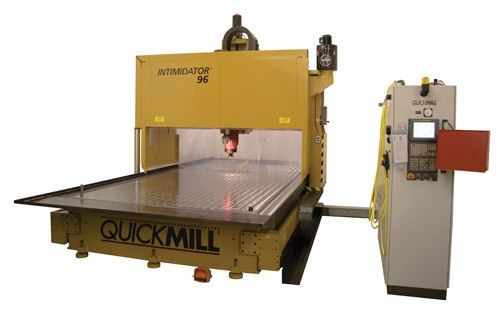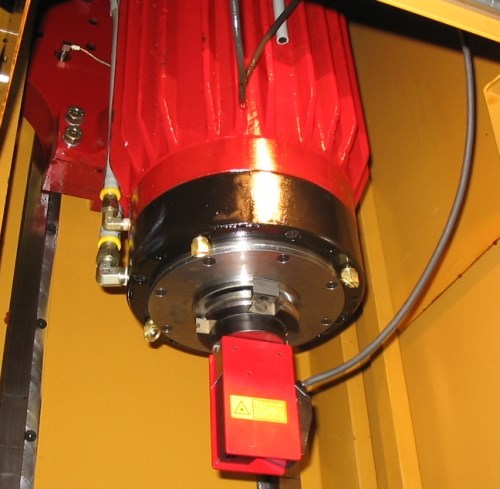Laser Scanning Speeds Holemaking Operations
A laser scanning system offers an alternative to touch probing for quickly finding numerous hole positions in heat-exchanger workpieces.
Share



Plates used to form large, air-cooled heat exchanger weldments often require hundreds of holes. It’s typically not extremely tight tolerances that make it challenging to create these holes. The issue is that the heat of welding distorts the plates with existing undersized holes. Bringing these holes to final size and geometry requires a lengthy measuring routine to determine the true XYZ position of each hole.
For example, air-cooled heat exchanger header boxes have opposing faces, each with as many as 400 through holes to accommodate inner tubes. To create a header box, undersized holes are first drilled in plates that will become the box’s top and bottom faces. Those plates are welded to other plates to complete the box. The box (which can be as large as 36 x 200 x 8 inches) is then delivered back to the machine tool for subsequent holemaking operations.
The undersized holes on the box’s bottom face require drilling, reaming and grooving operations. Drilling, tapping and counterboring operations are required for the holes in the top face, each of which accommodates a sealing washer and plug. Oftentimes shops with CNC machines use touch probing to locate the XYZ position of each hole. (Determining the actual Z-axis position for holes in the top face is especially critical because counterbore depth must be consistent for every hole.) While touch probing is effective in locating holes on these components, probing every hole can take as long as 3 hours. Quickmill, a manufacturer of CNC drilling and milling machines, has developed a laser scanning system that can determine all hole positions in minutes, greatly reducing spindle down time.
The scanning laser is mounted to a tapered holder for installation in a Quickmill machine’s spindle. The laser is wired to an auxiliary PC that communicates with the machine’s control. Moving linearly at a rapid traverse rate, the laser scans one face of the header box to determine X, Y and Z axis offsets for all holes in that face. The system’s software stores the XYZ data for each hole in a table. Once scanning is complete, macros pull the measured XYZ position for each hole to be machined into the control so the machine knows the proper position and tool offset. After the machining operations on one face are complete, the part is flipped and the scanning and machining processes are repeated for the opposing face.
The laser scanning system is available on all Quickmill drilling and milling machines. Although the system was developed for the air-cooled heat exchanger industry, the company says it may be a quicker alternative to touch probing for determining offsets on other large-part applications. It can be especially effective when Z-axis feature heights are irregular, according to the company.
Related Content
-
Orthopedic Event Discusses Manufacturing Strategies
At the seminar, representatives from multiple companies discussed strategies for making orthopedic devices accurately and efficiently.
-
Additive/Subtractive Hybrid CNC Machine Tools Continue to Make Gains (Includes Video)
The hybrid machine tool is an idea that continues to advance. Two important developments of recent years expand the possibilities for this platform.
-
How to Successfully Adopt Five-Axis Machining
While there are many changes to adopt when moving to five-axis, they all compliment the overall goal of better parts through less operations.






















 (1).png;maxWidth=300;quality=90)

